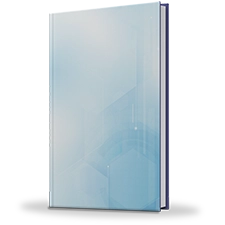3D LiDAR Sensor Market Outlook – 2030
The global 3D LiDAR sensor market size was valued at $0.51 billion in 2020, and is projected to reach $2.30 billion by 2030, registering a CAGR of 14.5% from 2021 to 2030.A
3D LiDAR sensor is a device that uses a laser and generates three-dimensional data by scanning the surrounding environment. A rotating mirror directs the laser beam horizontally and vertically to scan an area, while a second mirror directs the light reflected from the target to a photodetector.
The growth of the global 3D LiDAR sensor market is anticipated to be driven by factors such as the ability of these 3D LiDAR sensors to capture a 3D image, which has augmented their application in various industry verticals such as automotive, consumer electronics, & healthcare sectors, and rising penetration of image sensors in automobiles. In addition, the growing demand for 3D LIDAR sensors for agricultural robots boosts the overall market growth. However, the high manufacturing cost of these sensors acts as a major restraint on the global 3D LiDAR sensor industry. On the contrary, increasing application of 3D LiDAR sensors in the defense and civil engineering fields is expected to create lucrative opportunities for the global industry.
Segment Overview
The global 3D LiDAR sensor market is segmented into type, application, connectivity, end user, and region.
By type, the market is classified into mechanical and solid state
By Type
Mechanical segment will dominate the market throughout the forecast period
Depending on the application, the market is categorized into navigation devices, advanced driver assistance systems (ADAS), corridor mapping, seismology, security & surveillance, and others.
By Application
ADAS segment will generate the highest revenue with a highest CAGR of 16.8% during 2021 - 2030
By connectivity, it is differentiated into wired and wireless.
By Connectivity
Wired segment will maintain the dominance during the forecast period
Based on end user, the market is classified into consumer electronics, aerospace & defense, automotive, transportation, healthcare, and others.
By End User
Automotive segment will lead the market by the end of 2030 with a highest CAGR of 16.6%
Region wise, the 3D LiDAR sensor market trends are analyzed across North America (the U.S., Canada, and Mexico), Europe (the UK, Germany, France, Russia, and rest of Europe), Asia-Pacific (China, Japan, India, South Korea, and rest of Asia-Pacific), and LAMEA (Latin America, Middle East, and Africa). North America dominated the market in 2020 and is projected to register a significant growth rate during the forecast period, owing to the growth of the automotive sector. However, Asia-Pacific is expected to witness a significant growth rate by the end of the forecast period, followed by North America.
By Region
Asia-Pacific region would exhibit the highest CAGR of 16.0% during 2021 - 2030
Leading 3D LiDAR sensor market manufacturers such as Infineon Technologies AG, Faro Technologies Inc., and Sick AG are focusing on their investment in technologically advanced, cost-effective, and more secure products and solutions for various applications.
Top Impacting Factors
The prominent factors that impact the 3D LiDAR sensor market growth are the rising demand for 3D imaging and falling prices of drones. In addition, rapid development in autonomous vehicle technology drives the 3D LiDAR sensor market. However, a lack of awareness among consumers restricts the market growth. On the contrary, an increase in demand for these sensors in forestry & agriculture is expected to create lucrative opportunities for the market.
Competitive Analysis
Competitive analysis and profiles of the major 3D LiDAR sensor market players such as Faro Technologies Inc., GeoSLAM Ltd., Infineon Technologies AG, Leddartech, Leica Geosystems AG, Raymetrics S.A., Sick AG, Vaisala, Velodyne Lidar Inc., and Mitsubishi Electric Corporation have been covered in the report. These key players have adopted various strategies, such as product portfolio expansion, mergers & acquisitions, agreements, geographical expansion, and collaborations, to increase their market penetration and strengthen their foothold in the industry.
Asian and European countries under lockdowns have suffered major losses of business and revenue due to the shutdown of manufacturing units. The operations of the production and manufacturing industries have been heavily impacted by the outbreak of COVID-19, which has further impacted the growth of the 3D LiDAR sensor market.
In addition, the COVID-19 pandemic has impacted the electronics sector, as production facilities have stalled, which, in turn, has boosted the demand for electronics and semiconductor products in the industry. Its major impact includes large manufacturing interruptions across Europe and interruptions in Chinese parts exports, which may hinder the market growth.
Key Benefits For Stakeholders
- This study comprises an analytical depiction of the global 3D LiDAR sensor market size along with the current trends and future estimations to depict the imminent investment pockets.
- The overall 3D LiDAR sensor market analysis is determined to understand the profitable trends to gain a stronger foothold.
- The report presents information related to key drivers, restraints, and opportunities with a detailed impact analysis.
- The current 3D LiDAR sensor market forecast is quantitatively analyzed from 2020 to 2030 to benchmark the financial competency.
- Porter’s five forces analysis illustrates the potency of the buyers and the 3D LiDAR sensor market share of key vendors.
- The report includes the market trends and the market share of key vendors.
3D LiDAR Sensor Market Report Highlights
| Aspects | Details |
| By Type |
|
| By Application |
|
| By Connectivity |
|
| By End User |
|
| By Region |
|
| Key Market Players | LEICA GEOSYSTEMS AG, MITSUBISHI ELECTRIC CORPORATION, LEDDARTECH, INC., INFINEON TECHNOLOGIES AG, GEOSLAM, VAISALA, RAYMETRICS, SICK AG, FARO TECHNOLOGIES INC., VELODYNE LIDAR, INC. |
Analyst Review
The global 3D LiDAR sensor market is flourishing at a rapid pace. However, high manufacturing cost is still a concern for new entrants. Market players are generously investing in R&D activities to develop improved components to reduce overall costs of 3D LiDAR sensor products. It is essential to optimize affordable prices for 3D LiDAR sensor products for long-term growth.
The growth of the global 3D LiDAR sensor market is anticipated to be driven by factors such as ability of these 3D LiDAR sensors to capture a 3D image that has augmented their application in various industry verticals such as automotive, consumer electronics, & healthcare sectors, and rising penetration of image sensors in automobiles. In addition, growing demand for 3D LIDAR sensor for agricultural robots boosts the overall market growth. However, high manufacturing cost of these sensors acts as a major restraint of the global 3D LiDAR sensor industry. On the contrary, increasing application of 3D LiDAR sensor in defense and civil engineering field is expected to create lucrative opportunities for the 3D LiDAR sensor industry.
The key players of the market focus on introducing technologically advanced products to remain competitive in the market. Product Launches, acquisition, partnership, agreement, and product expansion are expected to be the prominent strategies adopted by the market players. North America accounted for a major share of the market in 2020, owing to the presence of major players in the region. However, Asia-Pacific is expected to grow at the highest CAGR, owing to rise in adoption of 3D LiDAR sensor in a variety of fields.
The 3D LiDAR Sensor Market is estimated to grow at a CAGR of 14.5% from 2021 to 2030.
The 3D LiDAR Sensor Market is projected to reach $2.30 billion by 2030.
To get the latest version of sample report
Rising demand for 3D imaging and falling prices of drones etc. boost the 3D LiDAR Sensor market growth.
The key players profiled in the report include Faro Technologies Inc., GeoSLAM Ltd., Infineon Technologies AG, Leddartech, and many more.
On the basis of top growing big corporations, we select top 10 players.
The 3D LiDAR Sensor Market is segmented on the basis of type, application, connectivity, end user, and region.
The key growth strategies of 3D LiDAR Sensor market players include product portfolio expansion, mergers & acquisitions, agreements, geographical expansion, and collaborations.
Asia-Pacific region would grow at a highest CAGR of 16.0% during the forecast period.
Advanced Driver Assistance System (ADAS) segment will dominate the market by the end of 2030.
Loading Table Of Content...




